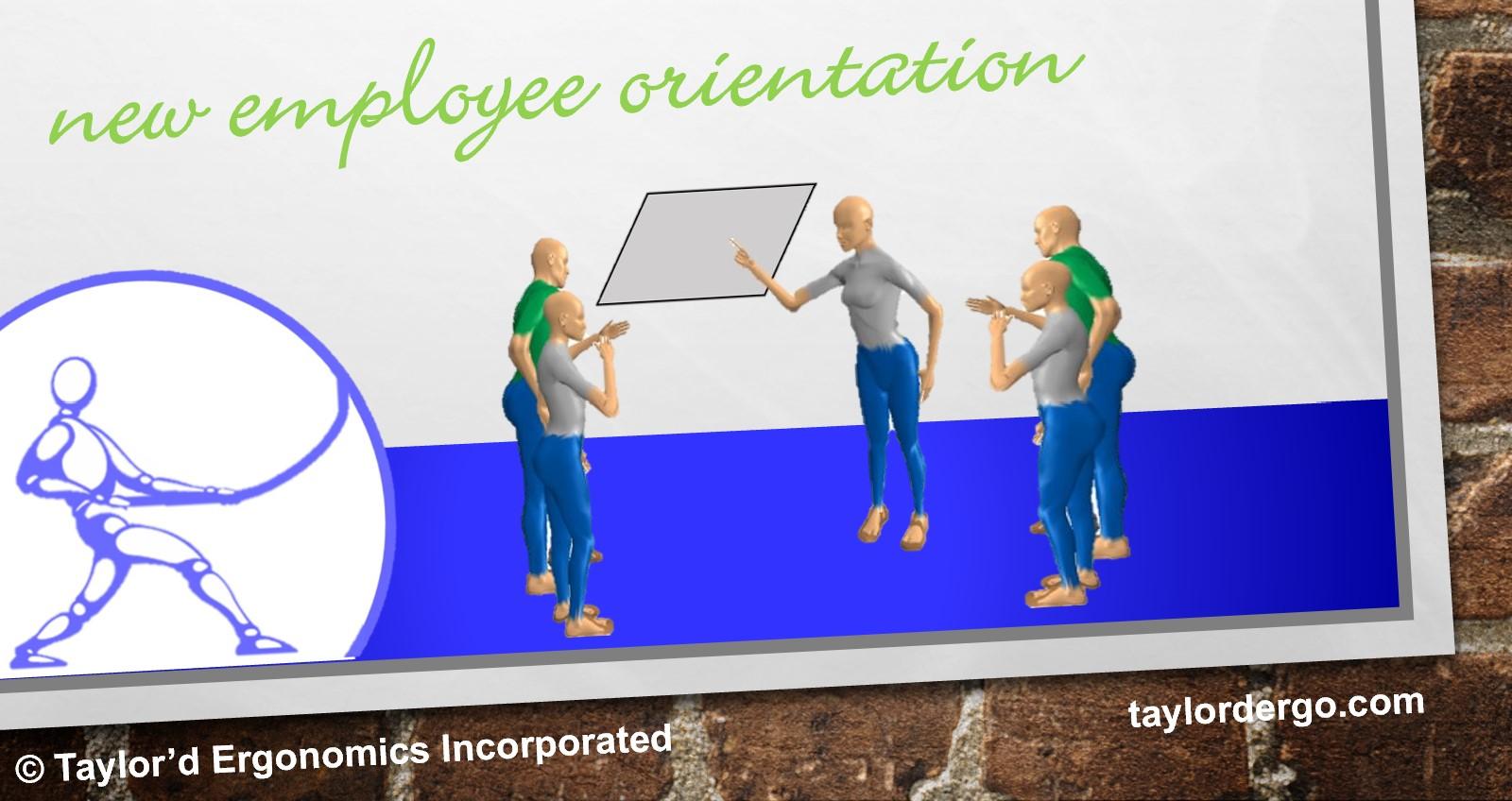New employee orientation typically focuses on important tips like how to get paid, and how to avoid getting hit by a truck at work – admittedly high priorities for both employees and employers. However, new employee orientation offers a one-time opportunity to encourage employees to practice ergonomics. Here are the things that I wish employees could learn, when they first start a job that includes lifting, prolonged sitting, or hand work. (That doesn’t leave many of us out, does it?)
- Any new activity is likely to cause muscle or joint discomfort, as our bodies adapt. Soreness that goes away with rest is normal. What activities cause temporary muscle soreness? The first week of baseball, fall leaf raking, spring gardening, painting, starting a weight training program, etc.. Soreness that lasts over the weekend, especially after two or three weeks on the job, should probably be treated as an early sign of injury. Similarly, numbness and tingling are signs that should be attended to – don’t try to wait them out.
- If you experience these early signs of injury, you should advise your supervisor, who should help you determine appropriate next steps. The supervisor may:
- Suggest changes to your work method
- Seek out an expert to help coach you
- Modify your job in some way
- Suggest that you seek medical care
- Experienced employees often discover “best practices” for specific tasks. Sometimes, they figure these out because they are trying to avoid aggravating an ache. Particularly small employees often find ways of doing tasks that are “easier” simply because they can’t do them the way everyone else does. If you’re uncomfortable in your job, ask for help from an experienced or small co-worker. (Tall workers often have good tips for other tall workers, too!)
- Ergonomics, or strain/sprain injury prevention, is important at our company; ergonomics means fitting work to people. If you feel like your body is being forced to fit a workstation, instead of the other way around, you might need some ergonomics help. For example, if your job requires you to reach really high or far forward, then it doesn’t fit you. If a task is awkward, or requires a lot of effort, an ergonomist or ergo committee might be able to suggest changes that will make it easier, for you and for everyone else who does the job. Ask your Joint Health and Safety Committee representative to take a look at the job.
How does ergonomics work? Let’s consider an example from home that most of us can relate to: Shoveling snow.
- If you shovel your entire driveway and sidewalk after the first big blizzard of the season, there’s a good chance you’re going to be sore the next day. Are you injured? Probably not. (Certainly it’s possible to injure yourself after the first snowfall, but for most of us, it’s just a case of shovelling too much, too soon.)
- If Mother Nature drops heavy, drifting snow for 21 days straight, and you’re the only shoveler in the family, the job may exceed your body’s tolerance. Talk to your “supervisors” (aka spouse, partner, family, friends). What can they suggest? (Get help, try a different type of shovel, plan a different pattern of shoveling to avoid double-handling, hire someone, get a snowblower, treat your symptoms with ice/heat, anti-inflammatories, etc.)
- How can you learn about “best practices” for shovelling? (Ask older or smaller friends, family or neighbours, or check out YouTube.)
- If the problem stems from the equipment you’re using, or the “workstation” design, what changes might be possible? (Extra handle on the shovel, different size of scoop for different types of snow, push scoop vs blade, snowblower, reduce the width of your driveway for the winter, pave your driveway next year, etc.)
Of course, this is a winter example; employee orientation should include examples for all seasons! You also need to ensure that your supervisors are trained to fulfil their roles in the program.
Let us know how we can help; we offer ergonomics training for new workers, and for existing workers and supervisors in a variety of settings. We’d be happy to “taylor” a session to your needs!


